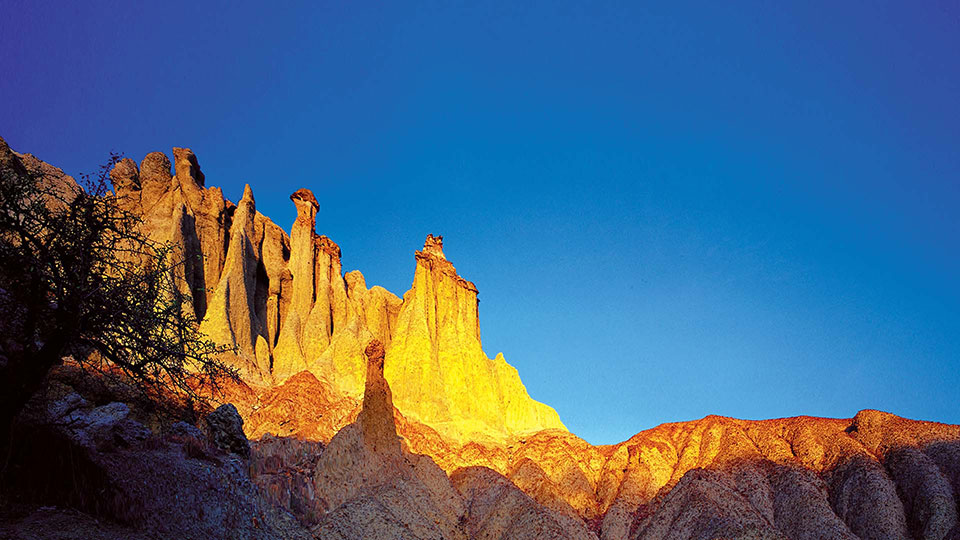Kratovo - a city of medieval towers and bridges.
It is assumed that on today's location of the city of Kratovo, a city under the name of Kratiskara existed long ago. Under the name of Kratis or Koriton, the settlement was mentioned in the Byzantine period, and today's name originates from the location of the city in the crater of an extinguished volcano. The relief conditions of the space required in Kratovo a special architectural and construction approach, that is, a typical Kratovo architecture to develop.
Where is Kratovo located?
Kratovo is located in the northeastern region of the Republic of Macedonia and is located in the southwestern foothills of the Osogovo Mountains in the valley of the Kratovo River, a left tributary of Kriva Reka. With a simple communicative connection Kratovo is connected to the northwest by Kumanovo and Kriva Palanka, and to the south by Probistip. Today the Kratovo Municipality is an administrative, educational and health centre in its gravity area, it has about 7,000 inhabitants, and in the economy the leading role is given to mining and industry.
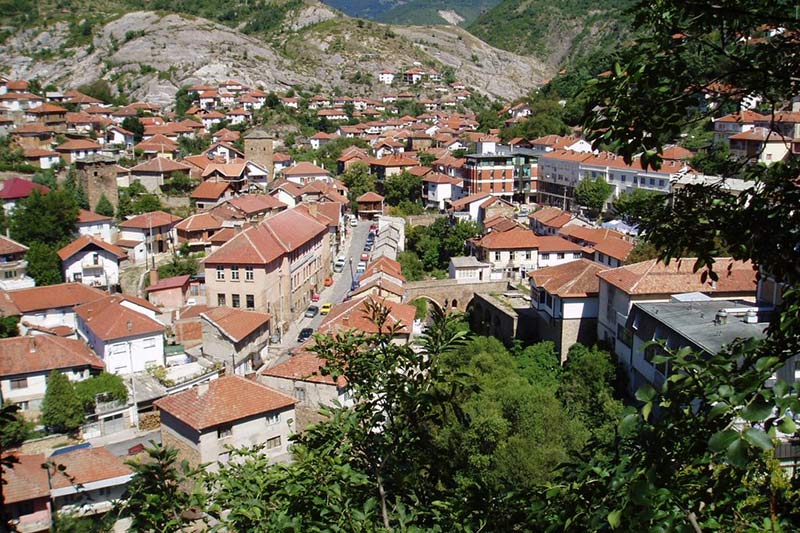
The architecture of Kratovo
Kratovo's architecture is characteristic due to the typical Macedonian old architecture. Almost all buildings possess stone and wooden structure, perest and clay brick. This method of construction allows the elasticity and firmness of the buildings, in the style of the Old Macedonian architecture. The houses are amphitheatally set, with significantly higher parts of the upper side than the lower one. They are mostly two-story, with overhanging verandas. Kratovo's architecture is characterized by narrow and steep streets, multiple bridges, as well as a number of traditional craft shops and various other individual older and newer architectural buildings.
The ledges and ceilings were decorated with decorative planks. The balconies of almost all houses are a special mark of the Kratovo houses. The shaping of the house depended on the balcony itself. The doors of the houses are one of the most beautiful and most versatile details. They are found as one-wing or two-winged ones. Almost every house in Kratovo included a hammam, that is, a bath. As a separate room in the house we encounter a fireplace that served to heat the rooms or for cooking food.
Bridges in Kratovo
The intensive communication of the people in the city of Kratovo has inevitably contributed to the construction of bridges of Kratovska and Manceva Reka. The Kratovo bridges represent an appropriate expression of the construction in the Turkish period in our country. The centuries-old building experiences of the Turkish-Slav construction were interwoven in them. These are bridges with a slender line, with a main arch, with a precisely designed archivolata and have an emphasized decorative line. With the restoration of crafts and trade in the 19th century, there was a need for the construction of new bridges in the city. Divided around the bazaar, along with the towers, the bridges give the city a medieval character and an ambience of a city-museum. The bridges are built of carved stone, in the shape of an arch. The most famous is Rada’s Bridge, but Grofcanski, Bazaar, Yorkshire, Argulicki and Gornomaalski Bridge inspire with their exquisiteness, as well.
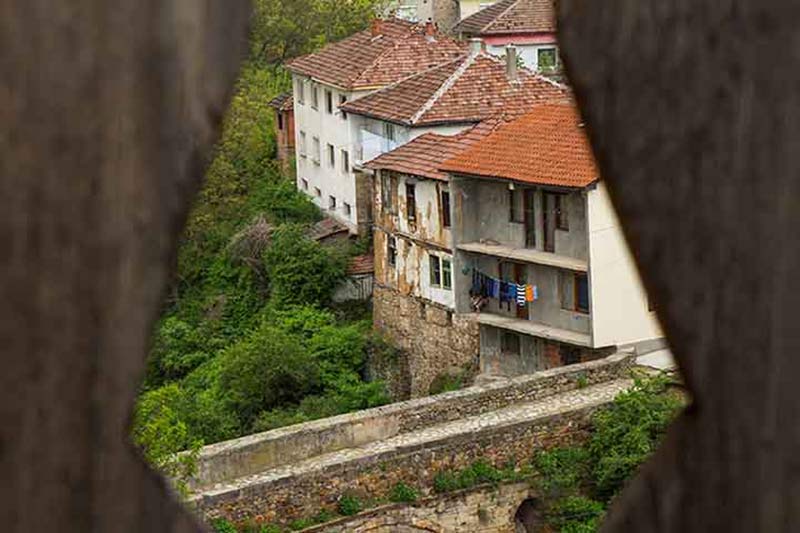
Grofchanski Bridge
It is located between the Serraglio Bridge and the Bazaar Bridge by connecting the Ajduk Bazaar to the right bank of the Kratovo River. This bridge is one of the main communication routes. The bridge was built in the early 18th century by the Kratovo family Grofchanski who moved from Asia Minor and was very rich. The length of the bridge is 30, the width is four, and the height is eight metres.
Grofchanski Serraglio
The serraglio of the wealthy family Grofchii was built in the early 16th century. After the family completely migrated to Turkey, the serraglio was purchased by a merchant from Kratovo, who converted a part of the huge facility into an inn, and the Turkish authorities adapted the ground area into a prison. If the stone could talk, then probably the Grofchanski Bridge would have tales for many novels. It is also mentioned by the traveler Evliya Celebia as a bridge leading to the most beautiful hammam in the Turkish Empire, from which today only its contours sadly peek. Grofchanski Bridge, called by the rich same-name family settled from Asia Minor in 1892, which built a delightful serraglio in Kratovo that could be reached only by that bridge.
Hawzi –Pasha’s Bridge, Rada’s bridge
This bridge is located on the famous Manceva River and was built in 1833. The bridge was built on two high towers, one of which is 28 high and the other 29 metres high. The current bridge was built by the famous Skopje notable Hawzi Pasha. For the most famous Rada’s Bridge a touching legend has been retold, according to which in the foundations Rada was bricked alive. The touching story of the nine brothers-builders and the beautiful girl Rada still attracts many foreign and local tourists arriving to see the legendary Rada’s Bridge in Kratovo.
As early as by the end of the 14th century, the famous master Rade built a bridge known as Rade’s Bridge. There were sentries on both sides and a bridge fee was paid in kind - with eggs, honey, cheese, curd cheese ... But around the year 1820 the bridge was destroyed by thunder. So the passengers were cut off, and the commercial connections with the nearby towns were hampered and people had to go through the Argulicki Bridge. That is why the Dubrovnik citizens and the Sasas, living in Kratovo, obtained funds from Dubrovnik and started the construction of the legendary Rade’s Bridge, just above the ruined Rade’s bridge, from which there are still remnants - tell the citizens of Kratovo, who for many years keep and collect the legends and traditions of the sights of Kratovo.
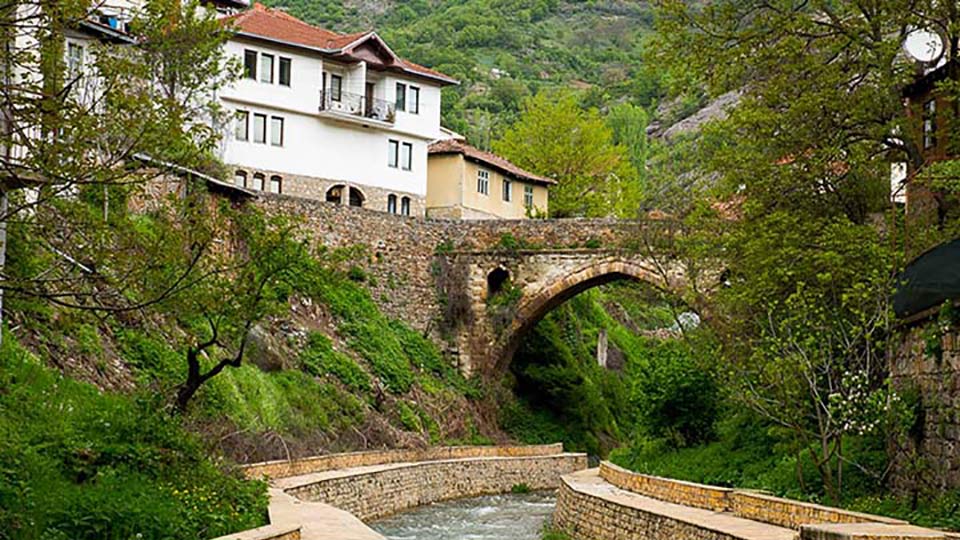
Legend of Rada’s Bridge
According to one legend, the construction of Rada’s Bridge was a covenant by the mother of the nine brothers-builders. The mother of the nine brothers, who were from the village of Krilatica in the Kratovo region, one day went to the market in Kumanovo, but did not get there because Kriva Reka pulled down Marko’s Bridge. After that, she had given her sons a covenant to build a bridge wherever they go to spread the shoplak because they were from a district inhabited by Shopi (villagers from Northeastern areas of Macedonia), and all nine of them had shopi names - tell the people from Kratovo.
According to the legend, they began to build the bridge of the Manceva River, but it was continuously ruined. Everything they built during the day fell down at night. For the bridge to “last”, they agreed, to brick the daughter-in-law who would bring them lunch the next day in the foundations to strengthen the construciton of the bridge. All brothers told their brides about the agreement, only the youngest brother did not say anything. The next day, the youngest bride Rada prepared lunch and brought it to the builders, and when her husband saw her, cried loudly. His brothers, however, caught her and put her alive in the foundations. Rada only kindly asked them to leave her right breast, so that she could breastfeed her male child.
Towers of Kratovo
Kratovo is the city with the largest number of medieval towers in Macedonia, a total of 17. Twelve are located on the left side of Kratovo, and five on the right. Only six of them are preserved, while the other towers are badly damaged. Most of the towers were damaged during the Karposh Uprising. The Zlatko’s Tower is the oldest and richest, built in 1365. Simic Tower is the most important, tallest and most beautiful tower in Kratovo, built in 1370 by the ruler of Kratovo at that time, the grandee Kostadin Dejanov. On the tower in 1921 a city clock was installed, so today it is known as a city clock tower.
Tower of Emin Bey
The tower of Emin Bey is 12.74 metres high, and the base is rectangular with a width of 6.10 metres. The door is located on the south side and is made of carved stone. Remains of extensions on the side walls are visible on the tower (it can be assumed that this tower may have been merged with another facility that was later demolished.) On the same wall to the right of the entrance of the tower a horn-shaped pyramid was was built, which is a separate building.This was a bathroom with toilet.The tower has three floors. The stairs are quite steep and wooden and only on the third floor they are made of stone.The third floor is 6.05 metres high with a cross vault and a roof of slabs.There is a fireplace, niche, shelves and cupboards for household use.
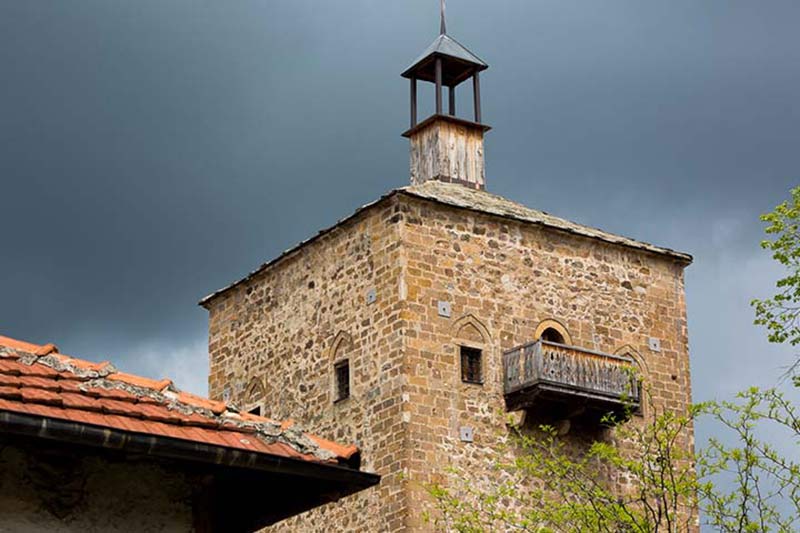
Tower of Abedin Efendi
Among the more preserved towers in Kratovo is the tower of Stevan Simic, formerly of Abedin Efendi. The High Tower (21.80 m) was built towards the end of the 14th century. The builders of the tower gave it a unique and peaceful solution with a monumental look, both by the combination of the mass and the composition of the used and embedded material - stone, brick and wood. On its last floor is one of the most beautiful rooms, decorated with stylized ornaments in the form of petals of lilies. There are also seven windows, fireplace, cupboards, two observatories, one slit and a balcony placed over the stone consoles, on the south facade of the tower. The interior is divided into floors, from which the most beautiful is the fourth one, with a beautiful view of the city. The upper parts was reached through tunnel stone stairs located on the south wall, so that there was an impression that the visitor moves through the tunnel.
Clock tower in Kratovo
The Clock Tower in Kratovo is located on the eastern corner of the square in the central city area. It is assumed that it was built in the late Middle Ages (probably in 1372) [1], and during the Ottoman period rich Turkish beys lived there. There were 12 towers in Kratovo, of which 6 are preserved today, including the clock tower. Within the tower there is a small museum setting that depicts Kratovo through the centuries. The tower clock has long been out of service and there is no clock mechanism inside the tower. However, because there was once a mechanism with a clock in the tower, the tower got its name. The tower was built of clay stone, which was dug out from the surroundings of the city, and the roof was made of stone slabs. The interior of the tower is divided into 3 floors, of which the upper ones are with one balcony and rooms to live in.
Tower of Asan Efendi
This tower was built in 1365. It was named after its last owner, Gjorgi Zlatkov. He bought this tower from Asan Efendi, after whose name it was called by then. The tower's base is rectangular, it was built of thick stone walls, it is 5,90 and 6,35 m high. The tower has three floors, one enters in it with the help of movable stairs. Below the threshold of the doors are the remains of stone beams and an expanded wall on which the movable stairs were placed. On the southeastern wall there is a basin which was a bathroom with a sanitary knot. Towards the last top floor wooden stairs lead through the wooden door, which closes horizontally. It is assumed that this tower is one of the oldest Kratovo towers.
Culture in Kratovo
Kratovo has the following cultural institutions: the city museum of Kratovo, the home of culture and the city library. There are three Orthodox churches in Kratovo. The church "St. Nikola Cudotvorec" in Carina Maala, renewed in 1848. The church "St. Jovan Preteca "in the Ribarsko Maalo (the work of the Mijak master Andreja Damjanov), renewed in 1836. and the Church "St. Gjorgji Kratovski ". It was dedicated to the only martyr, proclaimed a saint from Kratovo from the 16th century "St. Gorgi Kratovski ", who, because of his faith in Christianity, was burnt in 1515 in Sofia.
In his honour and glory and in honour of stepping into the third Christian Millennium, the Municipal Council of Kratovo declared the holiday "St.Gjorgji Kratovski" for the patronal celebration of the city celebrated on February 24th, and the saint "St.Gjorgji Kratovski" became a symbol and protector the city and the municipality.
Festival "Golden Days" in Kratovo
The city of towers and bridges is the host and organizer of one of the most entertaining festivals of music and culture. Kratovo manages to establish itself as one of the most famous cities where there is a perfect synergy of entertainment, culture and history. This festival is a great opportunity for everyone to get acquainted with the history of the wonderful Kratovo and to fill their soul with wonderful music, Kratovo gourmet specialties and great amusement.
Tourist attractions in the area of Kratovo
The region of the city is covered with natural green areas, it features beautiful picnic places, such as: Lisec and Bukovec mountains and the valley of the rivers Zletovica and Kriva Reka.
Stone dolls - rocky formations at v. Kuklica, Kratovo
The stone dolls in this area are a natural phenomenon, caused by the long-lasting erosion of volcanic rock with varying resistance: ignimbrites, andesite and tuffs. Scientists, however, say that the stone figures were created 10 million years ago, when there were still no people on the planet. The vertical erosion of the volcanic rocks created "dolls" higher than ten metres, which still dominate the tame environment today. Over time, nature shaped rare masterpieces of them.
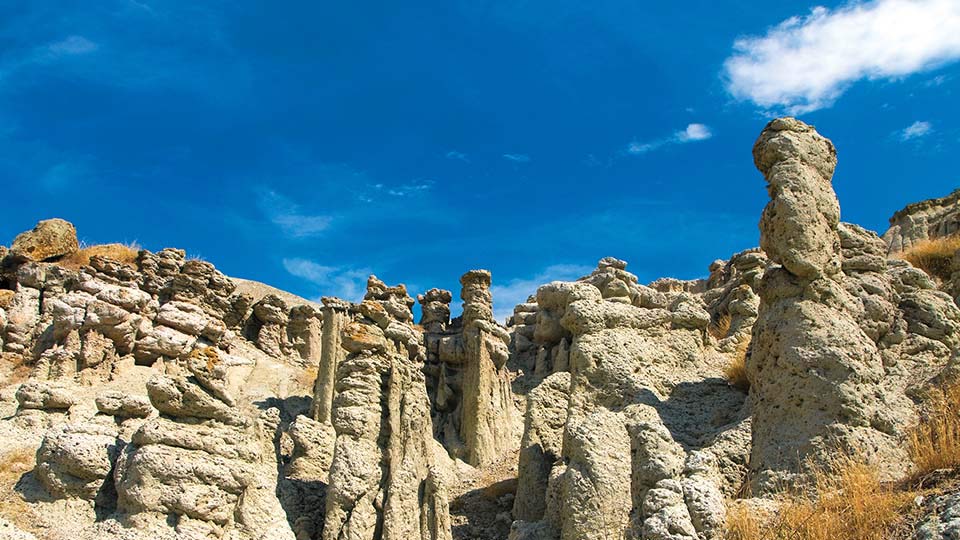
Legend of the "Joyful Wedding"
The legend says that long ago a tragedy happened in the village of Kuklica. The boy, in who a girl was infinitely in love, married another, which caused the disappointed girl to curse the bride and groom. When the wedding day came, seemingly everything was fine: the in-laws gathered, the other guests arrived, the celebration began. At the moment when the bride and groom kissed, the curse was realised and all the wedding guests became stones. Even today, the stone wedding guests testify to the anger and the pain of the unhappy girl.
The villagers call the place "Joyful Wedding" because the guests remained smiling, and the newlyweds were petrified in a gentle embrace. Because of these petrified "dolls", the place got its name - Kuklica. With a little imagination, each visitor can complement the gaps in the story, because it is not known what happened to the girl who made the curse. The locals say that their ancestors tried to break the curse of the girl in love, but they failed.
The Cocev Kamen Rock
The Cocev Kamen rock is of volcanic origin, one hundred metres high and several hundred years old, today it is considered a prehistoric observatory. It is a Neolithic settlement, located 25 km west of Kratovo, in the immediate vicinity of the village of Shopsko Rudari. The rock itself was a spiritual sanctuary, which is noticeable from the many remains and objects found in the immediate vicinity. About 10,000 years ago ritual dances were performed here, bathing under the waterfall and offering sacrifices to the gods of wine and fertility. The value of Cocev Kamen was discovered in 1971. Some researchers consider it a unique site in the world that has a sanctuary, an altar and an observatory in one place.
More information about Kratovo can be found on this website and the brochure from Municipal Institution the Museum of the Town of Kratovo -Kratovo.

